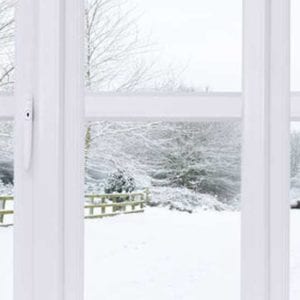What Happens When Your Furnace is Red Tagged in Ontario
It’s even worse than you thought.
You knew this could end in a big repair bill – it’s never a good sign when your furnace starts failing in the middle of January. You were even prepared to go without heat for a day while the service tech made the repairs.
But you never expected they would shut off your gas entirely.
Now, not only are you worried about the cost of fixing your furnace, you’re wondering how you’ll prevent your pipes from freezing and keep your family comfortable in the meantime
Here are the facts on red tags in Ontario: what they are, why they’re issued, the process for red tag removal, and how to get second opinion on a red-tagged appliance.
What is a ‘Red Tag’? What Does it Mean?
Here in Ontario, the use of gaseous fuels like natural gas is subject to rules in the Technical Standards and Safety Act and its Regulations. Certified licensed gas technicians, like those that work for service companies like AtlasCare, are required by law to follow these standards.
In some circumstances, this regulation will require a gasfitter to fill out a red tag.
So, what exactly is a red tag?
Warning tags, more commonly known as red tags, indicate that:
- A gas-powered appliance is in “unacceptable condition”; and
- The person responsible for that appliance (be it the owner, property manager or another occupant) must take action to fix the conditions.
Depending on the seriousness of the problem, the technician may also be required by law to shut off the supply of gas to the appliance. And it’s not only furnaces that can be red-tagged – any gas-powered appliance, including boilers, water heaters and gas dryer units, can also be the target of a warning tag.
Why Was My Appliance Red-Tagged?
Licensed certified gas technicians are required by law to red-tag an appliance they find in “unacceptable condition.” They have the discretion to determine whether a furnace (or another appliance) should be red tagged, and if so, which type of tag it should be (more on this in the next section).
What counts as “unacceptable condition”? If your furnace or water heater has been red-tagged, it could be because:
- It has been damaged or has deteriorated in a way that impairs its safe operation.
- There is an issue with the condition of its piping, tubing or hoses.
- It is being used for a purpose other than that which it was approved.
- It has been altered in a way that impairs its safe operation.
In the case of residential heating appliances, option A or B are the most likely issues – chances are, you haven’t altered your equipment or used it for some unusual purpose. In any case, you won’t have to guess, because the tag will state the reason why your appliance has been red tagged (and a good technician should have taken time to explain the issue.)
With furnaces, a cracked heat exchanger one of the most common reasons for red-tagging. The heat exchanger transfers heat energy to the circulating air while safely containing the by-products of combustion; when it’s cracked, there is a chance those by-products (like carbon monoxide) could leak.
What happens next depends on which type of red tag you have received.
Types of Red Tags: Unacceptable Condition vs. Immediate Hazard
Different gas companies’ red tags work the same way. They’re all based on the standards set out in the regulation, so an Enbridge red tag means the same thing as a red tag from Union Gas or another distributor.
What matters more is the category of tag you get.
There are possible types or ‘levels’ of red tags a technician can dispense: Category “A” (immediate) or Category “B” (30-day). The choice will determine whether the appliance can stay on while it is being repaired.
Immediate Red Tag/Warning Tag Category “A”:
- Means the licensed technician has found that the appliance’s condition poses an immediate hazard.
- Requires the technician to shut off the supply of gas to the appliance immediately.
- Bars the appliance from being used again until the unsafe conditions have been fixed and proof has been received by the gas company.
30-Day Red Tag Warning Tag Category “B”:
- Means the licensed technician has found the appliance in condition unacceptable but does not believe it poses an immediate hazard.
- Includes an expiry date (30 days from the day of the tag) that sets the deadline for when the appliance must be fixed.
- Requires the gas company to shut off gas to the appliance if they do not receive proof that the appliance has been fixed by the 30-day deadline.
In other words, red tag Category A means the licensed technician shuts off your gas before they leave; red tag Category B gives you an opportunity to have the appliance fixed before that happens.
What Are My Options for Red Tag Removal?
When a licensed gas technician deems your furnace unsafe to the point of “unacceptable condition”, they are required by law to slap on a red tag.
But that doesn’t mean your furnace is done for.
The process for red tag removal in Ontario is as follows.
1. Call a Technician
Have a licensed certified gas technician inspect the appliance and make repairs as needed. It does not need to be the same technician or service company that issued the red tag.
2. Have the Appliance Inspected
Ask the licensed technician to inspect the appliance for the faults identified in the red tag.
The tech can either agree with the red tag designation (and recommend a course of action) or determine that the appliance is already safe. If the appliance is safe to use, the licensed technician can complete the “clearance” portion of the red tag and re-activate the appliance.
3. Send the Clearance Portion of the Red Tag to the Gas Company
Once it is completed, make sure the gas company receives the red tag clearance before the deadline. A reputable service company will take care of this step for you.
You may have heard of service companies offering “second opinions” for red tags in Ontario. These services involve the same red tag removal process outlined above. A certified gas technician visits the home, inspects the appliance, and determines whether it is unsafe. If everything’s fine, the tech fills out the clearance and re-activates the appliance.
Should I Get a Red Tag Second Opinion?
In Ontario, if a licensed certified gas technician finds an appliance in “unacceptable condition”, they are required by law to give it a red tag. There’s no room for argument.
What can be questioned is the conclusion of “unacceptable condition.” That’s where second opinions come in.
There are many cases where homeowners might rightfully question the technician’s call. Sometimes, the furnace gets red-tagged by one service company only weeks after it was serviced by another. Other times, the technician issued the tag without doing a thorough inspection or a proper combustion analysis.
Having your furnace red-tagged can be devastating. It puts you in the difficult position of weighing the cost of repairing a supposedly-dangerous appliance with the cost of replacing it outright, all while you and your family go without central heat.
If your furnace gets red-tagged, it always pays to have a second opinion from a servicer you trust. In a best-case scenario, the technician can remove the tag on the spot – otherwise, they can at least provide sound advice on whether you should repair or replace.
Remember you have the right to ask a technician for a copy of their license to prove they are certified.
For homeowners in the Greater Toronto Area and Hamilton, you can call or contact us for a free quote on red tag second opinion services from AtlasCare.





